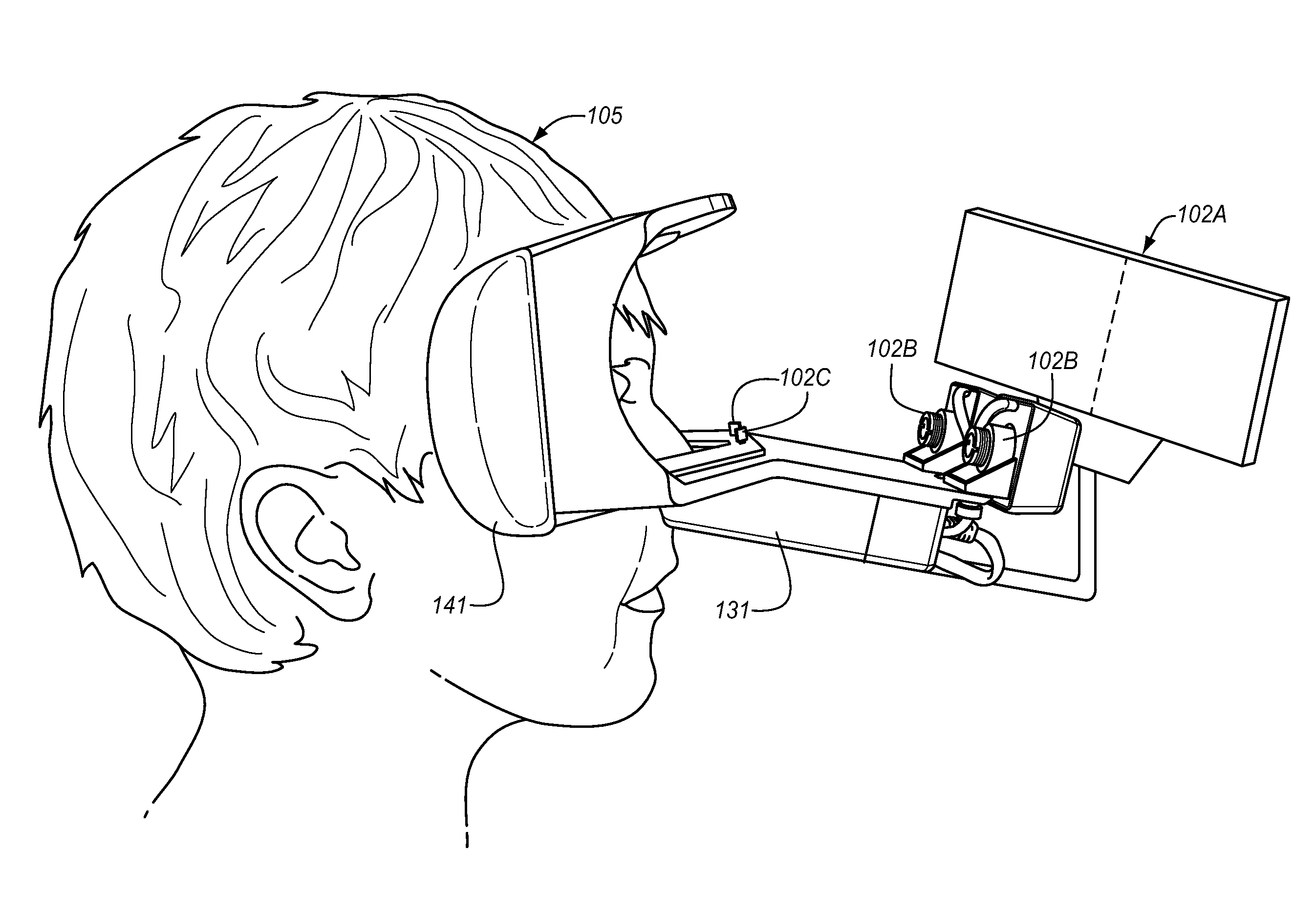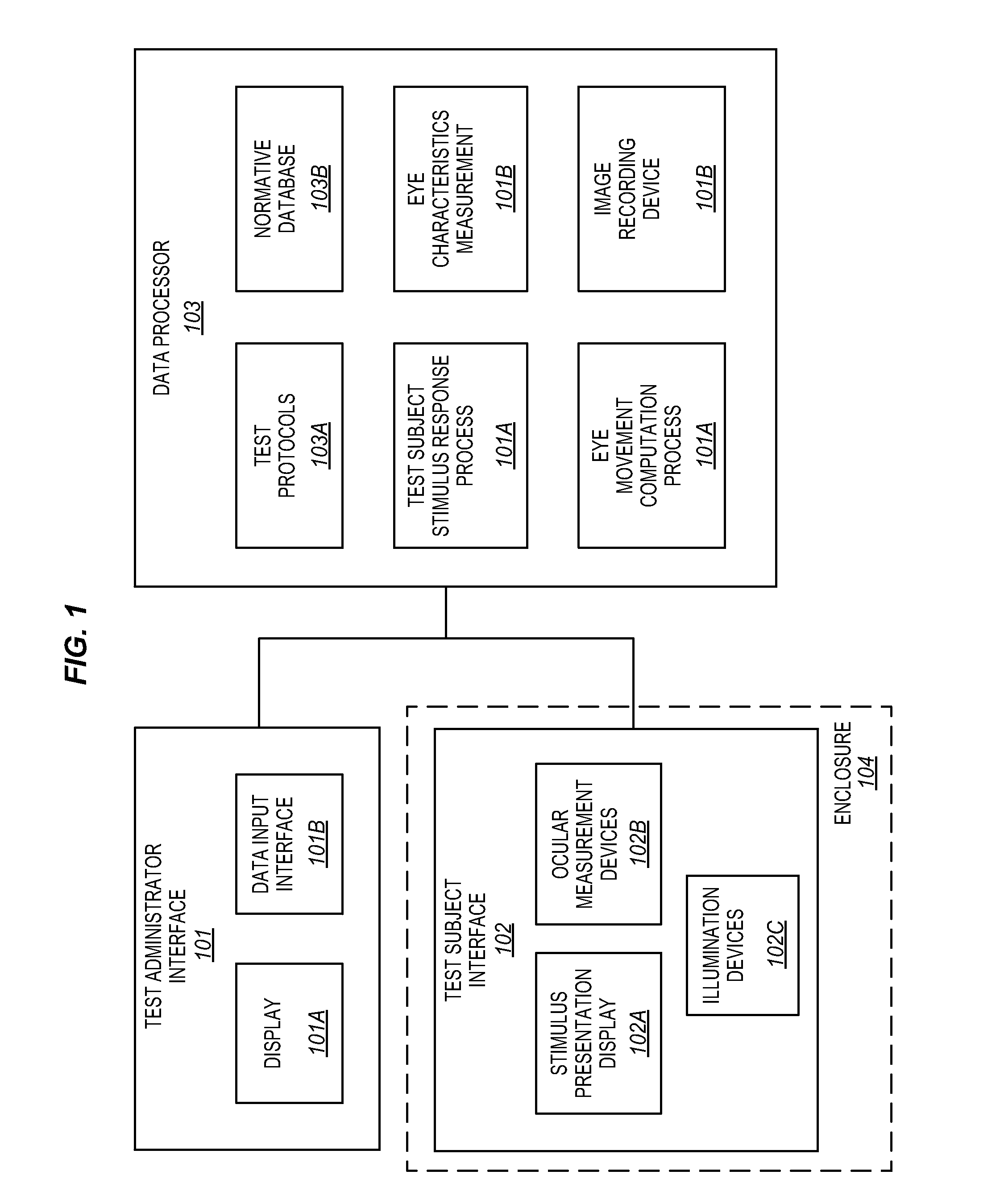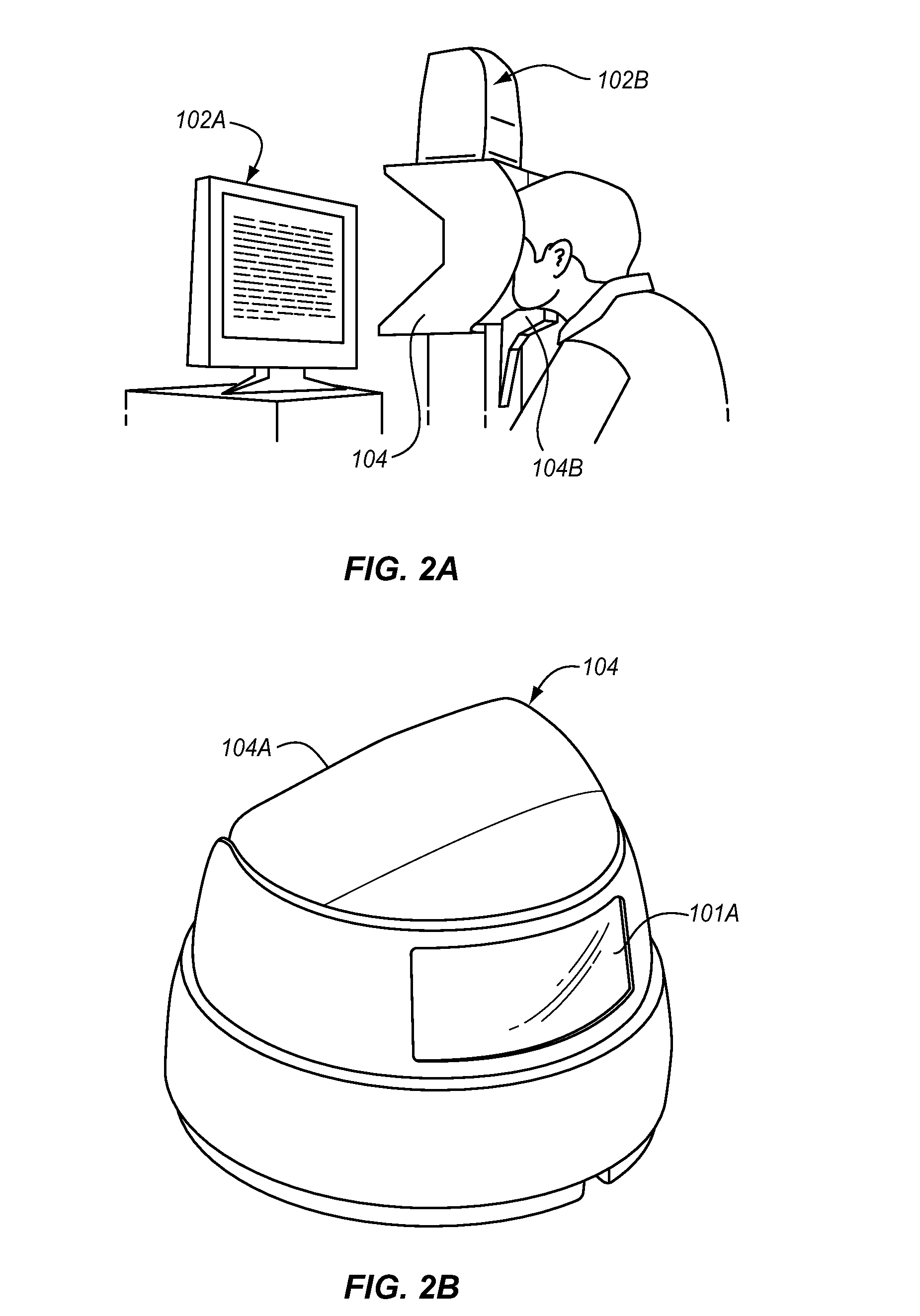System for the physiological evaluation of brain function
a brain function and physiological evaluation technology, applied in the field of system for the physiological evaluation of brain function, can solve the problems of inability to provide an effective tool for detecting and monitoring tbi, limited test protocols, and currently available equipment, so as to facilitate the understanding of neurophysiological problems, maximize the effect of these measurements, and be easily tested.
- Summary
- Abstract
- Description
- Claims
- Application Information
AI Technical Summary
Benefits of technology
Problems solved by technology
Method used
Image
Examples
Embodiment Construction
[0032]The present OculoKinetic Device measures a set of test subject physiological parameters, which can include: an individual's eye movements, pupil size and reactivity, eye lid position and blink parameters, which optionally can be combined with other ocular elements, i.e., eyeball pressure, temperature, blood flow, etc. In order to determine the presence of abnormal ocular responses to visual stimuli, the OculoKinetic Device produces an eye movement stimulus protocol that moves a visual target in any direction of the two-dimensional plane on a stimulus presentation device. For example, with a Smooth Pursuit test, instead of a target moving in a horizontally only or a vertically only direction, it may move the visual target in a FIG. 8 pattern or a more complex, randomized pattern on the stimulus presentation device. The target representation is not limited to just black and white images. It may turn out that certain brain injuries and / or illnesses are more accurately detected by...
PUM
 Login to View More
Login to View More Abstract
Description
Claims
Application Information
 Login to View More
Login to View More - R&D
- Intellectual Property
- Life Sciences
- Materials
- Tech Scout
- Unparalleled Data Quality
- Higher Quality Content
- 60% Fewer Hallucinations
Browse by: Latest US Patents, China's latest patents, Technical Efficacy Thesaurus, Application Domain, Technology Topic, Popular Technical Reports.
© 2025 PatSnap. All rights reserved.Legal|Privacy policy|Modern Slavery Act Transparency Statement|Sitemap|About US| Contact US: help@patsnap.com



